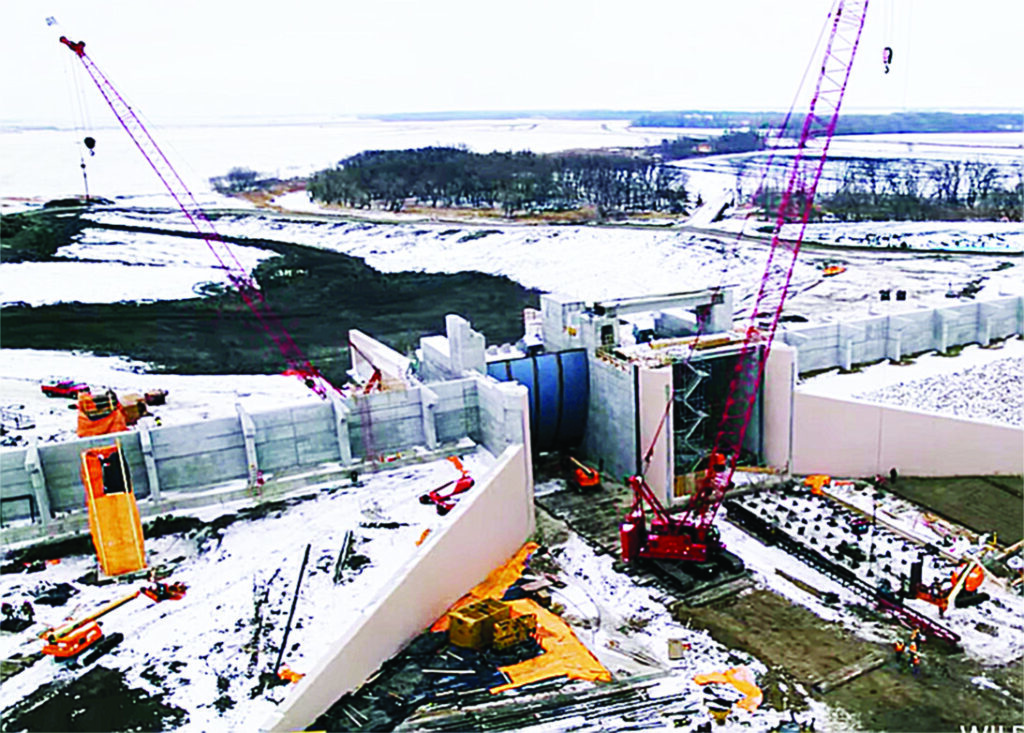moorhead city council

Construction work continues around the clock on the Wild Rice River structure south of Fargo, part of the FM Flood Diversion Project. Executive director Joel Paulsen reported on progress of land acquisition east of the river at the city council meeting Jan. 23. (Photo/FM MFDA.)
Nancy Edmonds Hanson
The Metro Flood Diversion Authority is developing two insurance programs to mitigate upstream landowners’ potential crop losses, executive director Joel Paulsen told Moorhead City Council members at their regular meeting on Jan. 23.
He updated them on two insurance policies that he termed “80% complete,” the Growing Season Supplemental Crop Loss and the Prevent Plant Crop Insurance programs.
After discussions between the MFDA and affected landowners, he said, “We’ve reached a consensus.”
The MFDA has retained Watts & Associates to develop both policies to compensate producers for losses when the diversion project is operational during years of major flooding of the Red River. The Prevent-Plant Crop Insurance would be activated if producers were unable to plant their crops by the late-planting dates set by federal crop insurance. If the diversion project operates during the growing season, the supplemental loss policies would cover 100% of resulting crop losses. Both programs will be provided to producers at no cost.
Farmers in the Upstream Mitigation Area — south of Fargo-Moorhead on both sides of the Red River — must be actively growing agricultural crops and participating in federal crop insurance prior to any losses. They will work through their crop insurance agents to sign up for a no-cost rider provided by the MFDA. The insurance will only kick in when the diversion project is operational.
Paulsen — who served on the Moorhead council prior to taking over leadership of the MFDA in 2019 — explained the new insurance will supplement, but not replace, regular crop insurance. It will come into play when cropland is submerged by closure of the diversion gates. In the prevent-plant scenario, cropland is submerged past the final planting date. In the second case, closure would delay planting until about two weeks later than in a normal year, reducing crop yield by about 10%.
The policies are expected to be ready to go by the time the project is nearly operational in 2026.
Paulsen also reported on the progress of property acquisition by the Moorhead-Clay County Joint Powers Authority. One-third of the 322 required plots have been acquired so far. That includes 26% of those needed for the southern embankment and associated infrastructure, 25% of the upstream mitigation area, and 72% of environmental monitoring easements. All of the property has been acquired for mitigation at the Drayton dam, 125 miles downstream (north) from Fargo.

